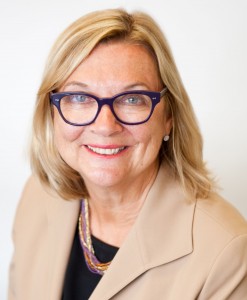Women in Leadership: Beyond Equality to Business Advantage
By Donna Howes, CHRP
“Why are we still talking about this?”
Great question. The answer is because it still matters. In fact, it matters more now than perhaps at any time in the past given the economic costs of the gender gap and the increasingly urgent need for exceptional leaders.
PeopleTalk sat down with four accomplished leaders whose experience spans the finance, marketing, insurance, energy, recruitment, sustainability recycling, non-profit and education sectors to find out what makes ‘women in leadership’ a topic that is as vital for a boardroom as it is for a #hashtag campaign.
Each leader interviewed for this edition’s cover story made the same strong statement—women in leadership is not an equity or perception issue. It is business and competitive advantage issue.
Gender Gap Stifles Economic Windfall
The Canadian Centre for Policy Alternatives (CCPA) says Canada’s workforce gender gap costs the Canadian economy in excess of $145 billion annually, a figure equivalent to 10 percent of our national GDP. At the pace of change we’ve seen in the past 20 years, CCPA says it will take a further 228 years to close the gender gap and reap benefits that are currently costing the economy.
In Canada, the issue of gender inequality has recently focused on the lack of women in executive leadership positions. PeopleTalk opened its pages to this topic because ‘how women lead’ is essential to achieving business and organizational results.
From an HRMA perspective, our mission is to keep people first in the decisions of leaders. Given our strategic role and commitment to advance people practices, the question becomes, “How can we as practitioners ensure there are seasoned, diverse voices at the table to help make the important decisions?”
Championing a Culture Change?
Nancy McKinstry listens from a depth of experience that reflects her unique profile in BC’s business and non-profit communities. Her unparalleled leadership comes from a lifetime of firsts which have led her to C-suite roles and to serve on many corporate boards. Throughout, McKinstry championed and advocated for culture change and became a role model for other women as a founding member of the Minerva Foundation for BC Women, an organization dedicated to helping women achieve their educational and professional goals. Her life-in-progress achievements have earned her an Order of Canada and an Honourary Doctorate of Law from Simon Fraser University, among many other accolades.
“I’m tired of this talk frankly,” McKinstry says. “I’ve been fighting this battle since I started my career and I’m tired. What I want to see in your article are the actual steps to change the ‘women in leadership’ discussion.”
So let’s talk about solutions and the steps to get there.
Diversity Key to Boardroom Debate
The Conference Board of Canada has said women’s decision-making and leadership qualities are in demand because they bring a divergence in views which lead to “constructive debate behind the boardroom door and encourages diligence in decision making.” In other words, it is good for the Canadian economy to have diverse opinions at the table.
This is being recognized globally, as McKinstry heard when she attended the International Women’s Forum in Hong Kong in May 2014 which attracted a group a group of 400 senior women leaders from 30 countries around the world. The theme of the conference—“A World Without Borders”—was no small topic to cover in four days, with discussions around the affect on financial markets, healthcare, technology and the environment.
“One of the speakers used a wonderful parable,” says McKinstry. “She said “Humanity has two wings, male and female. Currently the male wing is flapping too hard, and in order to fly, both wings need to be in balance.”
Small Increases, Major Opportunities
While women’s representation on the boards of public companies increased from 10.3 per cent in 2011 to 12.1 per cent in 2013, a Financial Post 500 survey by Catalyst reports that the picture for private sector boards is not encouraging.
During the same period, there has been no meaningful increase in the number of female board directors across Canada. British Columbia actually has the lowest percentage of women on board seats coming in at 11.9 per cent, well below Nova Scotia (25.7 per cent), Saskatchewan (23.2 per cent), Quebec (19.8 per cent), and Ontario (16 per cent).
Recognizing the economic pitfalls of one-dimensional boards, the Ontario Securities Commission (OSC) has announced amendments that would require companies listed on the TSX to increase the participation of women on boards and in senior management, and disclose their approaches to gender diversity.
“Our proposed amendments are intended to encourage more effective boards and better corporate decision making, which will benefit investors and the capital markets,” said Howard I. Wetston, Q.C., chair and CEO of the OSC. “This is about helping TSX-listed issuers tap into a pool of talented and capable resources currently under-represented on today’s boards and senior management.”
Not Rocket Science—Just Smart Thinking
McKinstry says this is a step in the right direction. “Women are smart, numbers-driven, and people-oriented, and the OSC is taking a leadership stand through this initiative. The next step is to make these changes systemic and to change the culture of our organizations. It has to come from the CEO and it has to trickle down. It’s not rocket science.”
When Bob Elton was CEO of BC Hydro, he drew on a wealth of experience in consulting—including more than 20 years with Price Waterhouse Coopers as CFO and CEO—to grow leaders at all levels of the iconic BC organization. His personal and professional leadership philosophy is based on making values-based decisions, and his experience has shown him that women are naturally strong in this leadership capacity.
“At Hydro we had a lot of diversity around the management table,” says Elton. “Half of the management team were women and over the time that I was with the company we ended up with about 40 per cent of the top 100 leaders being women—and it was probably 10 per cent before.”
Values-Based Leadership Broadens Appeal
So why is that important? Primarily because values-based leadership is anchored in relationships and relationships drive the discretionary effort of employees—as well as the brand loyalty that underpins every successful HR and customer relationship strategy.
In business and in life, the quality of the relationship matters.
“Every conversation you have is an opportunity to talk about values,” says Elton. “When you ask people what is important to them you’ll get a values-based answer. We need to pay attention to that because who we are as people, who we are at our core is intimately connected with what we do at work and how we do it.”
Of Old Schools and Triple Duty
If the key to effective decision-making relies on diverse views and values working together, why is it so difficult for organizations to hire, mentor, train and progress women through the lifecycle of their careers?
“Some organizational cultures still promote old style thinking that, ‘we need to hire people like us because it worked before….and it’s easier,” Elton admits. “Let’s face it, having a group of 10 or 11 people—half of whom are women—does mean that the conversation will be different. It means that questions will be asked in a different way, and that could mean that some men around the table are uncomfortable, or that it takes longer, or that we have to listen more to each other.”
The other piece of engendered thinking Elton still sees holding sway is the expectation of women to be leaders in on all fronts: at home and in the community, in addition to their careers. “The work with aging parents is seen as women’s work, and we continue to ask women to play these multiple roles. The workplace will have to change unless women can outsource certain things.”
Taking Preconceptions to School
Changing attitudes requires challenging the process and the status quo. Elton is educating and mentoring the next generation to do just this through his role as adjunct professor at the University of British Columbia’s Sauder School of Business where he teaches leadership.
While student intakes are 50/50 women and men in Bob’s Sauder program, gender balance issues in the real world are discussed. “I had a note last week from a former female student who has just taken her first job,” Elton relates. “What surprised her is how male dominated her new organization is and how different from the openness and transparency in higher education environment.”
This he maintains, is where young women leaders need to understand their values and their personal visions in order to succeed. “The best advice I have for young leaders, women and men, is to bring all your great skills and personal qualities to the table. Find a trusted leader with whom you can converse and learn, and if you’re really good, people will make room for you,” says Elton.
A Strong Belief in Self Required
Being really good requires believing in yourself first, before asking anyone else to make room or to believe in you. Consider Lisa von Sturmer, an award-winning entrepreneur, G20 Youth Entrepreneurship Summit Canadian delegate, and successful Dragon’s Den winner.
As a young woman in business, Von Sturmer maintains she has to prove herself to be taken seriously. She started in television and with creative agencies before deciding that she wanted to spend her life doing something positive with a tangible impact on the community. In 2010, she quit her “career” and founded Growing City, Canada’s only office composting recycling business. ??Von Sturmer’s belief in herself has helped her overcome what others might perceive as challenges. “I have real challenges with being taken seriously. I’m ultra-feminine—‘read’ as young—and my voice is really high pitched,” she admits.
Fortune Favours Solid Principles
Her leadership strategy is to listen, learn as much as she can from others with experience and to focus on what is important, not what is urgent. She picked up Mastering the Rockefeller Habits: What you must do to increase the value of your growing firm by Verne Harnish, and read it cover to cover to learn about the structures, policies and practices she needed to improve her business.
“I found this dry, slim little book about what the Fortune 500 companies are doing and got really excited. It taught me to focus on what is important,” says Von Sturmer. “Things like setting weekly goals and objectives at the beginning of every week, followed up with mid and end of week check-ins on how we did. That’s been really productive.”
These are solid leadership practices that have helped grow her green business into a multi-city enterprise, now expanding into the United States. From a leadership perspective, Von Sturmer has a clear purpose and decisive about the outcomes she expects. She is also living her values of being collaborative and community minded.
Emotional Connections Resonate
Does von Sturmer think she’s doing anything different because she’s a woman in business? “This is a woman run company, and we set soul goals as well as business goals. We support and value each other, and that’s a big attraction for young employees who want the emotional connection to their work in addition to a paycheck.”
The role of emotions in the workplace is emerging through thought leaders such as Daniel Goleman, Richard Boyatzis and Annie McKee, authors of Primal Leadership: Unleashing the Power of Emotional Intelligence. They argue that the fundamental task of leaders is to prime “good feeling” in those they lead: “That occurs when a leader creates resonance—a reservoir of positivity that frees the best in people. At its root, then, the primal job of leadership is emotional.”
This aspect of emotional intelligence—being intelligent about emotions—matters to von Sturmer and how she leads as a woman in business. “Women create the room for the emotional quotient which helps create the culture you want for your whole company to thrive,” she says. “It matters to me that I lead from the starting point of saying—Let’s work together so we can get the best solution possible.”
Beyond Pink and Blue Think
“Good decisions don’t come in pink and blue” is a well-wrapped wisdom attributed to another female business leader in BC.??“Yes, it sounds like something I would say,” says Leslie Meingast, CEO of TPD (formerly known as The Personnel Department). Her leadership wisdom is as straightforward as it is sage and her business is one of North America’s leading workforce & HR solutions firms in and BC’s third largest business owned by a woman.
“Leadership is about good decision-making. You better be inclusive and have a language around engaging customers, especially when you factor in that the women’s market is a $15 trillion dollar market,” says Meingast, who is not only a leader in the HR recruitment field, but is a seasoned and successful business strategist. “Companies are not built by quarters they are built over the long term—and great leaders are the same.”
Asked ‘how to ensure there are diverse voices at the table to make the important decisions’, she is certain about the first step every leader must take regardless of gender.
“You have to ‘know thyself’. Because as a leader you have to show up, be present, and lead by example. You’ve got to go places where nobody would go because if you don’t walk in that fire first nobody is going to follow you,” she explains.
Lean In to the Opportunity
The truth is though, being exceptional, knowing thyself, and living through values isn’t a leadership challenge for women. Meingast sees exceptional, values-driven women leadership potential every day as she works with people in all industries looking for their next career opportunity to succeed. She believes the real challenge is for organizations to make a pathway for these women throughout the lifecycle of their careers.
“There’s a fluidity to people’s careers and organizations need to remain aware of and engaged with their employees’ ever-evolving needs. At TPD we have an alumni and we always keep that connectivity with our people. As an organization, we build flexible pathways to enable women to stay engaged – in the workplace, and at home – throughout their careers. We’re looking for pathways back and forth all the time to keep women engaged,” says Meingast.
As leaders—women and men—we have been encouraged ‘lean in’ and to change the conversation from what can’t be done to what can. The conversation most needed about women in leadership today is how to help the best leaders, a growing number of whom are women, navigate the paths to leadership and, at the same time, unlock the means for organizations to get the best out of all people.
Want more? Read Top Five (x4) Leadership Tips.
Links For Further Study:
- About Lean In
- Catalyst Census 2013: Financial Post 500 Women Board Directors
- Centred Leadership—How Talented Women Thrive
- Global Gender Gap Report—World Economic Forum
- Women in Leadership: Perceptions and Priorities for Change
Donna Howes, CHRP, is principal of Humanity at Work, a coaching and organization development firm devoted to creating proud and productive workplaces











